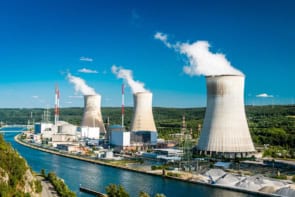A team of French and British scientists has demonstrated a new approach to particle acceleration based on lasers and plasmas. The approach has allowed the team to accelerate electrons to energies that are twice as high as those achieved by other plasma-based acceleration techniques (V Malka et al. 2002 Science 298 1596).
The performance of an accelerator can be described in terms of a voltage gradient. Traditional acceleration technologies cannot exceed gradients of 55 megavolts per metre, which is why particles accelerators have to be tens of kilometres long. To reach the energies of 1011 eV or higher that are needed to explore the unification of the fundamental forces, it is therefore necessary to build even longer accelerators – or to find new ways to increase the voltage gradient. Plasmas are promising candidates for use in the next generation of particle accelerators because they can support electric fields of greater than several hundred gigavolts per metre.
Over the past two decades physicists have demonstrated a number of plasma-based approaches in which the electrons are accelerated by waves in the plasma. In the latest experiments Victor Malka of the École Nationale Supérieure des Techniques Avancées in Paris and co-workers at the CEA/DAM laboratory in Bruyeres-le-Chatel, the University of Bordeaux and Imperial College in London have accelerated electrons to energies of 200 MeV – twice as high as the previous best. Malka and co-workers focused a 30 femtosecond pulse from a 30 terawatt laser beam onto a jet of helium gas to generate an ultrashort beam of energetic electrons. They used a “forced laser wake field” approach in which the plasma wave actually “breaks”.
“The main significance of our experiment is the production of an ultra-short, energetic and very collimated electron beam,” Malka told PhysicsWeb. “This new table-top electron source could be used for many applications in the near future.” The researchers now hope to increase the laser power to generate a mono-energetic electron beam at several hundred MeV for use in accelerators. They would also like to repeat their experiment with protons, with energies up to 10 MeV.


